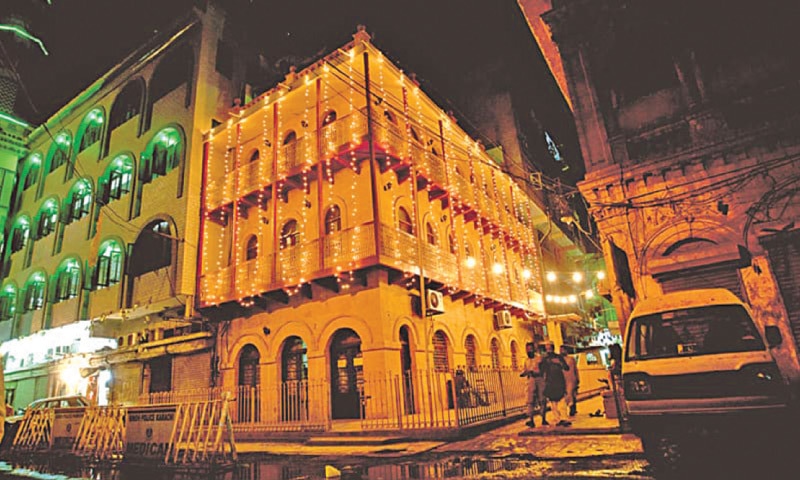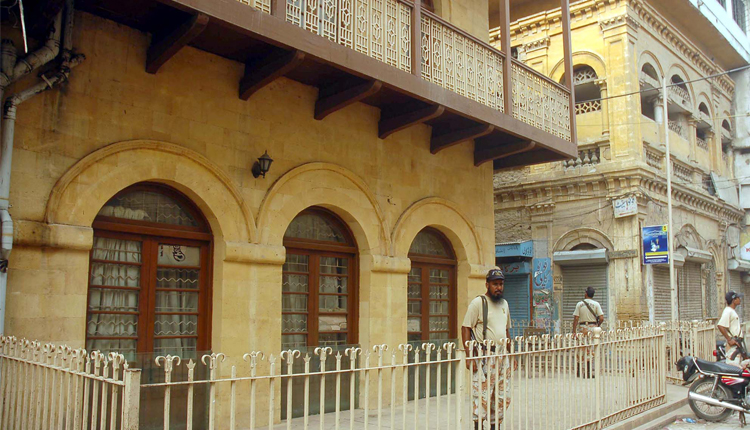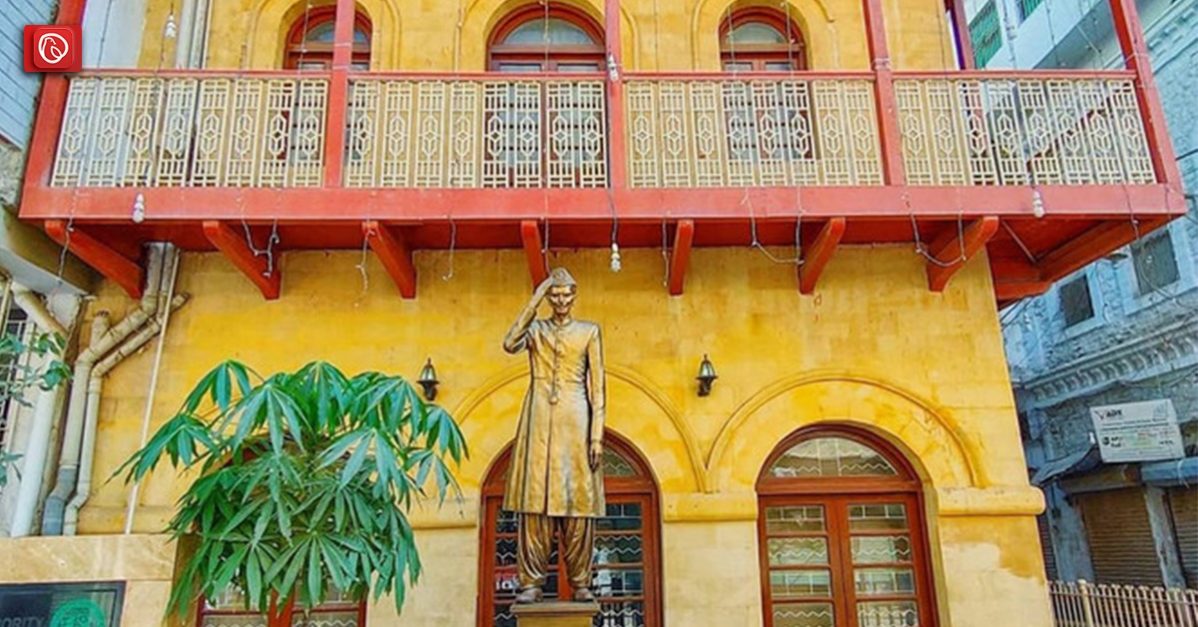Constructed between 1860 and 1870, Wazir Mansion, also known as the Quaid-e-Azam Museum, stands as a former residence in Karachi’s Kharadar district, Sindh, Pakistan. This historic dwelling holds immense significance as it marks the birthplace of Muhammad Ali Jinnah, the revered founder of Pakistan, who is admired not only by the people of Pakistan but also recognised internationally.
Wazir Mansion cherished as a national treasure, holds a special place of reverence in the hearts of the citizens of Pakistan. This historic monument serves as a profound source of inspiration for the nation.
Graana.com has discussed some intriguing facts about this significant landmark:
Quaid-e-Azam’s Birthplace

Quaid-e-Azam, the founder of our country and the most famous personality of Pakistan, was born on December 25, 1876, in Wazir Mansion. Initially, there was confusion about the exact location of his birthplace, but his sister, Fatima Jinnah, clarified this in her book “My Brother” published in the 1960s.
His parents had moved to Karachi because of a business partnership with an English Merchant company called Grams Trading Company, whose office was situated in Karachi. They decided to rent a modest apartment on the first floor of the building now famously known as Wazir Mansion due to its convenient proximity to their workplace.
Pakistan’s National Museum and Monument
The birthplace of Quaid-e-Azam stands as a precious national monument, reclaimed and recognised as a heritage site after his demise. It is also considered to be one of the most famous historical places in Pakistan. In 2010, extensive renovation and preservation efforts were undertaken, opening its doors to tourists who come to visit and appreciate its significance.
People from all walks of life in Pakistan visit this hallowed place with deep reverence, drawing inspiration from the remarkable life that began in Wazir Mansion. It serves as a living example of the nation’s greatest heritage, cherished and entrusted to the people of Pakistan.
Government of Pakistan Owns This Museum

In 1953, the Government of Pakistan acquired the historic Wazir Mansion from its previous owner, Mr. Wazir Ali. The government took measures to protect the building by placing it under the Ancient Monuments Preservation Act of 1975, and later the Pakistan Public Works Department undertook the task of renovating and conserving the structure.
Upon the completion of the renovation, the responsibility for Wazir Mansion’s maintenance was handed over to the Department of Archaeology and Museums, Government of Pakistan, on August 13, 1953. On August 14, 1953, Pakistan’s Governor integrated this mansion, who held the position of General during that period.
Former family home of Quaid-e-Azam
During the time of Quaid-e-Azam Muhammad Ali Jinnah’s birth, his parents resided in Wazir Mansion. Mr Muhammad Ali Jinnah spent sixteen years of his childhood living in this historic mansion before it was transformed into a national archive. Today, it serves as a valuable repository of educational information, inspiring enthusiasm, and pride among the people of Pakistan.
Location of Wazir Mansion
Situated in the Chagla Street area of Kharadar, Karachi, the Wazir Mansion proudly stands as a symbol of prosperity and dignity in this historic part of the city. Kharadar, being the oldest area of Karachi and a central location after independence, adds to the significance of this remarkable structure.
Currently, the area is bustling with activity, making it less suitable for residential purposes. For those planning to visit Wazir Mansion, I recommend opting for early morning hours or midday when the crowd is relatively sparse, allowing for a more pleasant experience.
If you’re travelling to Wazir Mansion from the other corner of Karachi, a reasonable maximum taxi fare should be around Rs.800, ensuring a fair and appropriate charge for the distance covered.
A Three- storey Building
Inside the building, the ground floor houses a public reading room and library for visitors. On the first floor, you’ll find the museum area, which features a balcony divided into three spacious showcase rooms.
On the second floor, there are nine showcases, with six fixed to the walls and two positioned in the centre of the room. Here, you can explore Quaid’s dress collection, including ties, suits, and trousers, each adorned with his initials “M.A.J” along with the tailors’ names mentioned on the tags. Lastly, the third floor serves as the custodian’s office, overseeing the preservation and maintenance of this historical treasure.
Beautiful Architecture
Architect H Sohak skillfully designed and constructed Wazir Mansion, using tiles masonry in lime and jute mortar to withstand Karachi’s unpredictable weather. The walls of this splendid structure are adorned with a rare and precious collection of photographs featuring Mohammad Ali Jinnah.
The mansion boasts elegant wooden stairs that lead to the first floor, where the balcony divides into three rooms. Notably, one of these rooms holds significant historical value as it is the very place where Quaid-e-Azam was born. Here, visitors can find Quaid’s birth bed, a dressing table, and a set of faded white couches.
Furthermore, the rooms proudly showcase an oil painting of Quaid. It is a thoughtful creation by artist Tajamul Hussain, and a map of Pakistan meticulously inscribed on marble. The interior of Wazir Mansion is truly a sight to behold. It reflects impeccable craftsmanship and attention to detail that deserves admiration.
Open to Public
The museum warmly welcomes the public for six days a week, but it is closed on Wednesdays. Operating from 09:00 AM to 05:00 PM, the museum’s main gate serves as the entry point for visitors.
Conveniently located at the main gate, you can find the booking office and a bookshop. The admission charges for adults are Rs. 20, while children between 6 to 12 years of age pay Rs. 10. The charges for entry of Foreign visitors are Rs. 300 for entry, whereas students in groups enjoy free access for study and research purposes.
Sightseeing Features
Apart from visiting Wazir Mansion, Karachi offers a plethora of other aesthetically pleasing sightseeing options. Besides exploring these landmarks, visitors can indulge in a delightful shopping experience at the various malls and wholesale markets scattered throughout Karachi.
Reading Room
The reading room at Wazir Mansion is a treasure trove for history enthusiasts. It houses an impressive collection of historical literature, including prominent newspapers dating back to 1953. With approximately 5000 books available, the topics covered range from biographies and the freedom movement to politics, law, and the history of Pakistan.
Of special significance are the 31 volumes of England’s regulations related to law, along with 684 law books that belonged to Quaid-e-Azam himself. Among these, ten law books bear the distinct honour of having Mohammad Ali Jinnah’s handwriting inscribed on them.
This remarkable collection provides a unique opportunity to delve into the legal and historical interests of Pakistan’s founding fathers. This is all about Wazir Mansion. To read more about the most famous historical buildings in Karachi, visit Graana blog.




